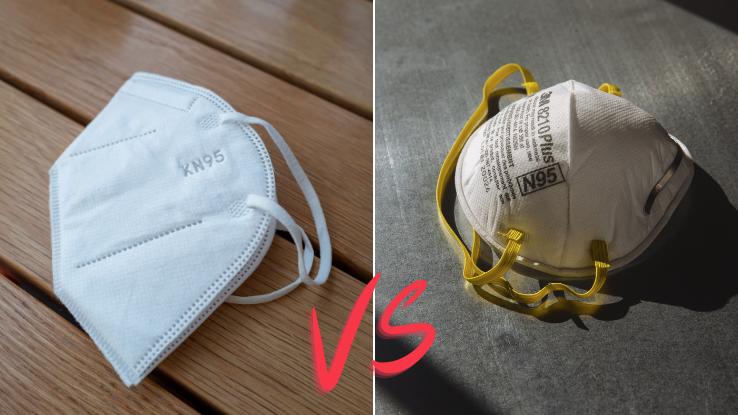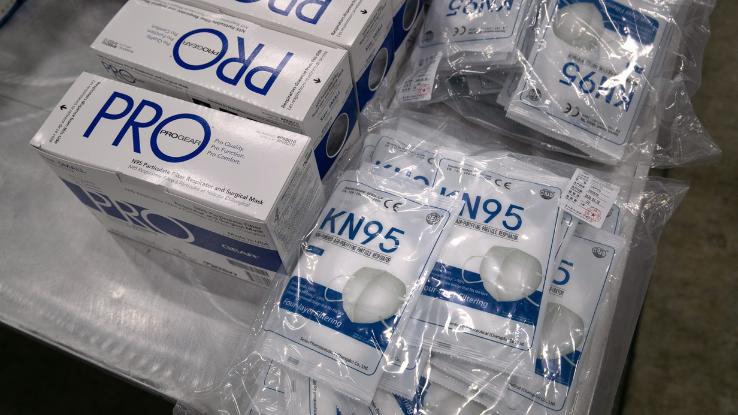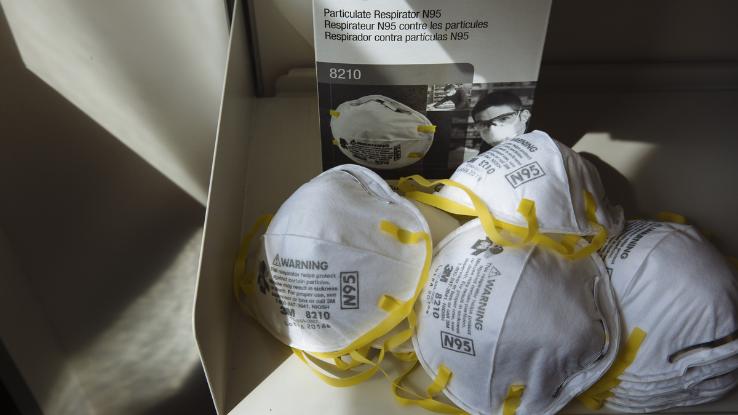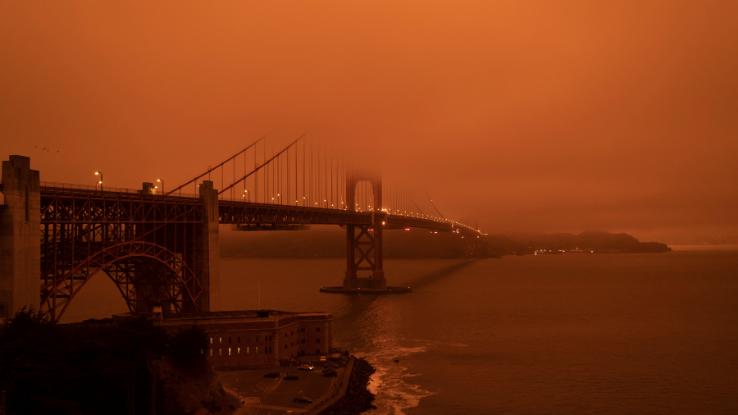
Back in February 2020, the Centers for Disease Control and Prevention (CDC) echoed the U.S. Attorney General, who had urged Americans to stop buying medical masks. At the time, the CDC stated that while standard surgical masks “help stop droplets from being spread by the person wearing them…they are not designed to protect against breathing in the very small particle aerosols that may contain viruses.” By April, however, the CDC did a complete U-turn and changed its official guidelines: Folks should use cloth face coverings to help slow the spread of COVID-19.
This new tune proved confusing to many Americans who believed they were doing the smart — and right — thing by foregoing masks, which were in short supply, even for healthcare workers and medical professionals. These days, masks are still required in public spaces like grocery stores and restaurants, but even though we’re more well-informed, there are still some lingering questions, particularly when it comes to different types of masks.
To complicate mask matters further, the COVID-19 pandemic isn’t the only disaster that’s urging folks to invest in protective face coverings. If you live on the West Coast of the United States, you’ve been dealing with the ongoing effects of the wildfires devastating parts of California and Oregon — namely, all of that smoke. In other non-COVID-19 years, folks would buy N95 masks during wildfire season, but should you be doing so this year?
What’s the Difference Between N95 and KN95 Masks?
For months, Americans have been told that if they aren’t healthcare professionals, they shouldn’t buy N95 masks. They require specialized training to use properly, and like most personal protective equipment (PPE) issued to healthcare workers, N95 masks are single-use only. However, a medical mask isn’t going to protect folks from the hazardous air quality in wildfire-ravaged states like California. Despite this truth, many Americans in smoke-filled areas have begun searching for N95 masks again, only to find the shortage alive and well. All of this has renewed folks’ interests in KN95 masks, which seem to be more readily available online.

But are these similarly named respirator masks really as effective as N95s? Let’s break things down really quickly:
- Surgical Masks: Loose-fitting and made of melt-blown fabric, these masks aren’t as effective as N95 masks. However, the fine mesh of the synthetic polymer fibers can still shield the wearer from infectious droplets — and stop the wearer’s potentially infectious droplets from being transmitted to someone else. Initial CDC guidelines stated that those who thought they had been exposed to COVID-19 — be they symptomatic or not — were to wear masks or face coverings in order to protect others, but now it’s more of a two-way street.
- N95 Masks: These thicker, stiff respiratory masks are equipped with filters that block 95% of particles that measure 0.3 microns in size. Most importantly, these masks are fitted to each individual, ensuring that they create a completely sealed barrier — meaning there’s very little chance of transmission when wearing these high-grade masks.
- KN95 Masks: The main difference between the N95 and KN95 mask is where the mask is certified. That is, masks have different approval processes, depending upon where they’re manufactured, so while N95s are certified in the U.S., KN95s are certified in China. According to the Oklahoma State Department of Health, N95 equivalents in Australia, New Zealand and Brazil are called P2 masks; much of Europe refers to a similar grade mask as FFP2; Japan certifies DS2 and DL2 respirator masks; and India’s N95 equivalent is known as BIS P2.
“In general, N95 is the U.S. standard, and the KN95 is the China standard,” Sean Kelly, founder of the New Jersey-based PPE of America, told Rolling Stone. “N95 mask requirements are a bit more stringent regarding the pressure drop in the mask during breathing in, which makes the N95 more breathable than most KN95 masks.” While the N95 might have a better breathability rating, both masks have many of the same protective properties and meet their respective certification processes’ 95% filtration requirements.
So, if this is the case, why are KN95 masks on (virtual) shelves? The answer is simple: Because KN95s aren’t certified in the U.S., American-based healthcare facilities can’t use them as PPE, although the Food and Drug Administration does allow for emergency authorization for foreign certified masks. It’s just a bit of a process that requires rigorous “fit testing.”
How to Wear N95 and KN95 Masks
With all of this in mind, selecting the right mask for your personal use boils down to your circumstances. If you’re trying to mitigate the spread of the novel coronavirus, a cloth mask will do the trick. However, if you are breathing hazardous air as a result of the wildfires, the Environmental Protection Agency (EPA) states that it’s best to wear a respirator mask. Of course, the agency’s guidance differs slightly this year due to the pandemic. Before using a respirator, folks should reduce their exposure to wildfire smoke by staying indoors as much as possible. Using HEPA air cleaners and air purification systems can also help.

The State of California echoes this sentiment, stating, “Don’t buy N95 respirator masks for personal use. They are part of PPE needed by medical professionals.” If you absolutely need a respirator mask to work outdoors or due to other unavoidable factors, try purchasing a KN95 mask instead. As mentioned above, they are just as effective as N95s, but U.S. healthcare workers can’t readily use them due to some extensive red tape.
If you do purchase a KN95 mask, make sure you’re wearing your respirator mask correctly by adhering to these EPA guidelines:
- 1) “Choose a respirator that has two (2) straps to go around your head.”
- 2) “Choose a size that will fit over your nose and under your chin and seal tightly to your face. Any leakage around the edge of the mask causes unfiltered air to enter and be inhaled.”
- 3) “To get a secure fit, place the respirator over your nose and under your chin, with one strap placed below the ears and one strap above the ears. Pinch the metal part of the respirator (if there is one) over the top of your nose so it fits securely.”
- 4) “Make sure the skin is clean shaven where the respirator touches the face. A good seal is not possible with facial hair.”
Additionally, it’s important to know when to dispose of your respirator mask. Often, these single-use masks make it more difficult to breathe, leading to dizziness and other symptoms. If you experience trouble breathing or feel your mask is getting dirty, dispose of it.
Where Can I Buy N95 and KN95 Masks During Wildfire Season?
If you’re interested in buying some KN95 respirator masks, they are readily available through online retailers such as Amazon. As evidenced by the Mars-like orange sky above San Francisco (below), the hazardous air quality is no joke, especially during a pandemic that attacks patients’ respiratory systems.

In an interview with The New York Times, Dr. Jeanne A. Noble, an emergency medicine doctor and the director of the Covid-19 response team at UCSF Medical Center’s emergency department, noted that although N95 (and KN95) masks with exhalation valves are great at filtering out smoke particles, they are bad news for pandemic concerns. That is, the valves “let the wearer’s breath escape the mask, thus posing a risk for spreading COVID-19.” Noble notes that if your wildfire smoke protection is equipped with an exhalation valve, it’s best to wear a surgical (or cloth) mask over it.






